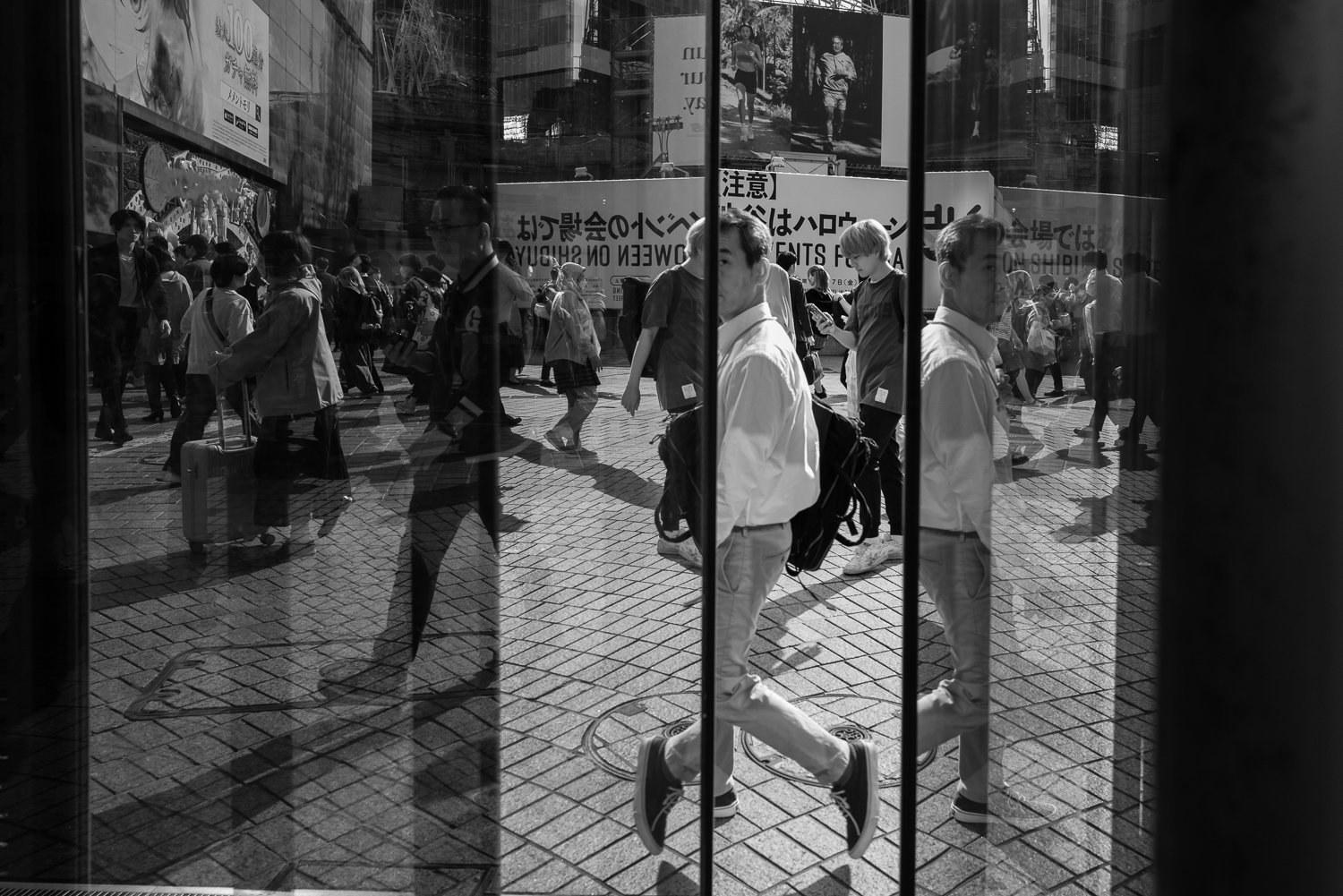Capturing The Nascent Reflections of Shibuya
Reflections of Shibuya
Capturing a reflection is straightforward. With the abundance of glass in Tokyo, one could even turn it into a career. Despite the romanticized nature of reflection shots, as a dedicated photographer, there is a wealth of unexplored opportunities in this field.
What I love about this style is that it can multiply and divide the subject. A straight reflection will multiply it, while a transparent surface will divide it. I am excited to use both in tandem.
A man walks past a pair of phone booths at the famous Shibuya scramble crossing. Two planes of transparent glass slice him into three slides, an instant expressed in a state of swollen now.
A man's reflection between two phone booths in Shibuya. Dividing the subject into smaller parts alters the weight and meaning of the image.
The man’s eye contact in this environment would make a good picture—an excellent one I would be happy to make and glad to have made. This picture goes a step further. Doubling the eye contact changes its meaning, and we react differently.
We find ourselves in a strange state of observation, where we are both the observer and the observed, creating a dynamic interplay of perspectives and experiences. With a single point of eye contact, viewing the subject seems more accessible and comfortable. Here, someone, the same someone we are observing, is watching us watch himself.
Which eye contact do you see first? Which holds your gaze? Which one means what to you? The hard stare versus the softer reflected version. Is he staring at us independently of us staring at him? Is the reflection of the man or the actual man the main subject? These are good questions. All have me searching for answers.
Below, an image also taken in Shibuya, near the station, uses reflection to a similar effect.
Three people, one reflection near Shibuya station.
In this instance, we have double eye contact but replace the transparency with more faces this time. There's one old and two young faces moving in different directions. each to exit the frame on opposite sides. However, the inverse is true; both walk towards the camera. The eye contact sandwiched between the faces gazes past the viewer’s vantage point. I envision a layer of himself forever reflected while the actual self moves on into the madness of Shibuya.
Supposing we all have a different take on this image, the more it makes me think, the more I love it. My mind is all story, so that's why I take this image into Doctor Who territory; another's mind will invariably go somewhere else. In both cases, the viewer keeps viewing, and in this age of content saturation, attention is the biggest compliment one can receive. Ironically, that measurement is hidden in code.

